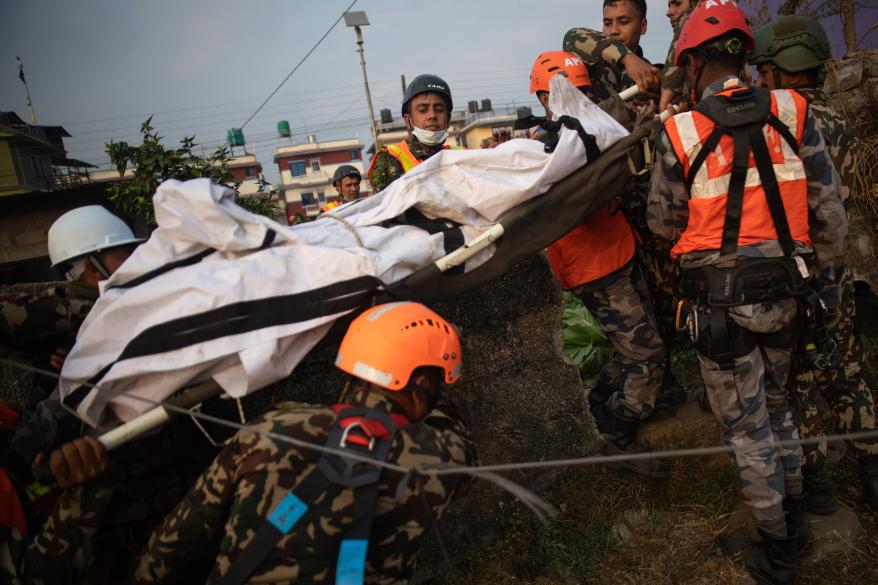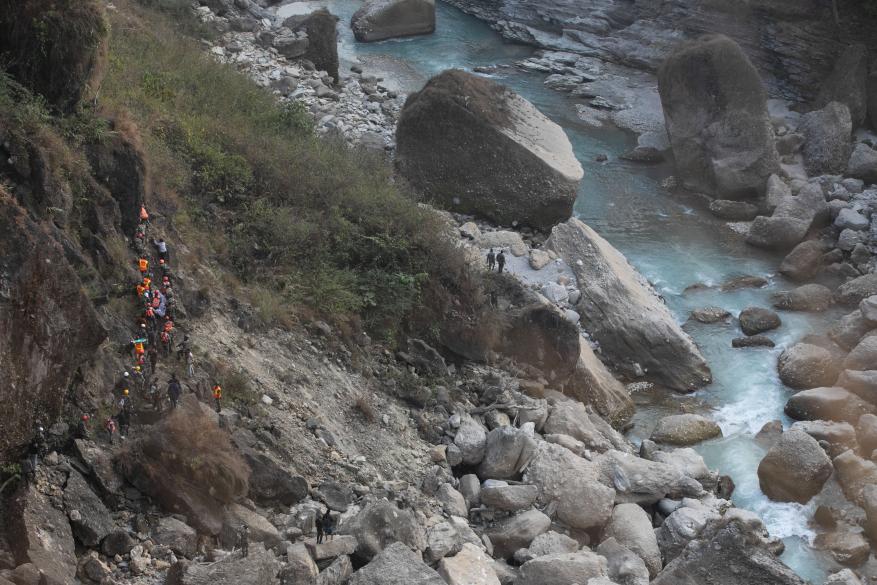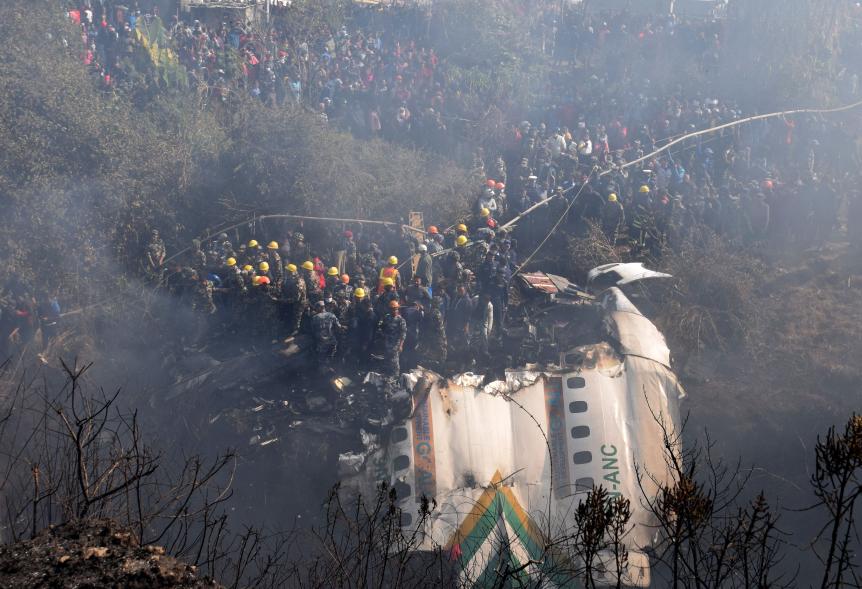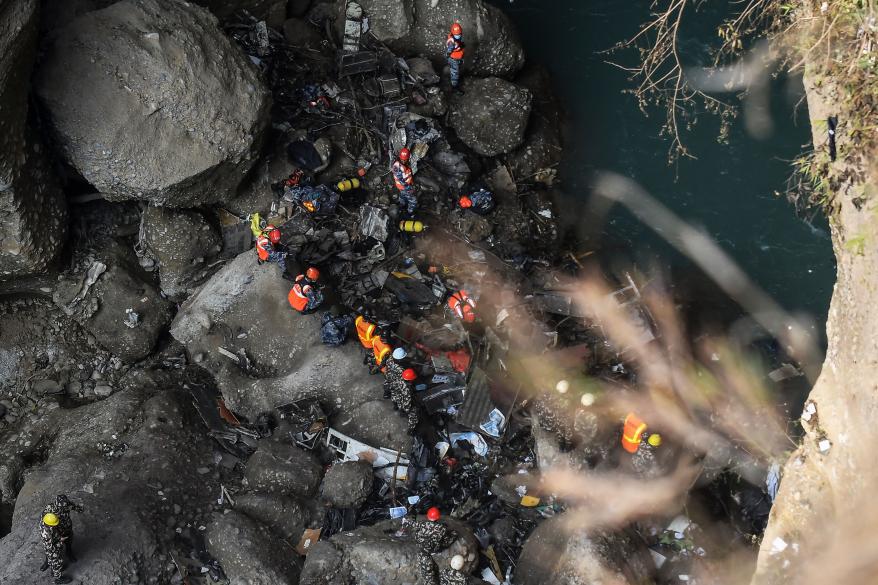Human error eyed as cause of Yeti Airlines crash in Nepal
Human error related to a lever mix-up was likely behind last month’s crash of a Yeti Airlines flight in Nepal that killed 72 people on board, according to a preliminary investigation report.
Yeti Airlines Flight 691 from Nepal’s capital of Kathmandu to the tourist city of Pokhara crashed minutes before landing on Jan. 15.
There were 72 people aboard the twin-engine ATR 72 aircraft, including two infants, four crew members and 10 foreign nationals. Rescuers recovered 71 bodies, with one passenger still unaccounted for but presumed dead.
Less than two minutes before the fatal crash, Captain Anju Khatiwada called for plane’s flaps to be extended, saying, “Flaps 30,” to which his co-pilot, Captain Kamal KC, replied, “Flaps 30 and descending, according to the 13-page preliminary report released Wednesday.
However, the flight data recorder “did not record any flap surface movement at that time.”
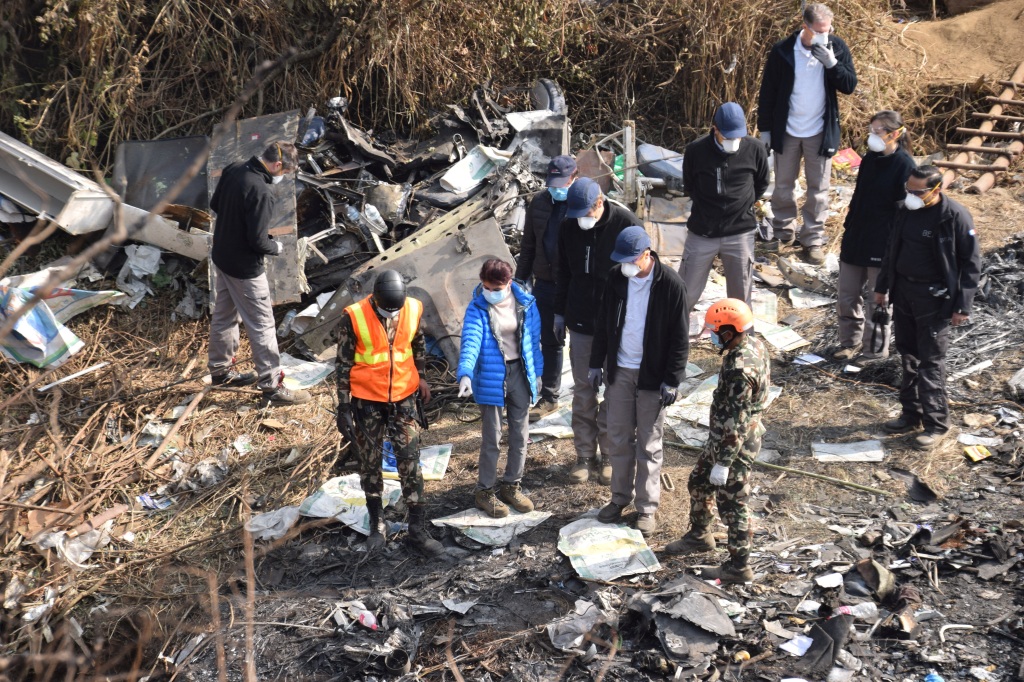
Instead, the propeller rotation speed of both engines decreased and the torque started dropping to 0%, suggesting that one of the pilots might have accidentally moved the power lever instead of the lever controlling the flaps — causing both engines to be “feathered,” meaning there was no thrust in the engines to push the plane forward.
Joint secretary at the Tourism Ministry Buddhi Sagar Lamichhane told the Kathmandu Post that the investigative panel is still working to determine why the pilots delayed extending the flaps, and why they failed to follow routine checklists.
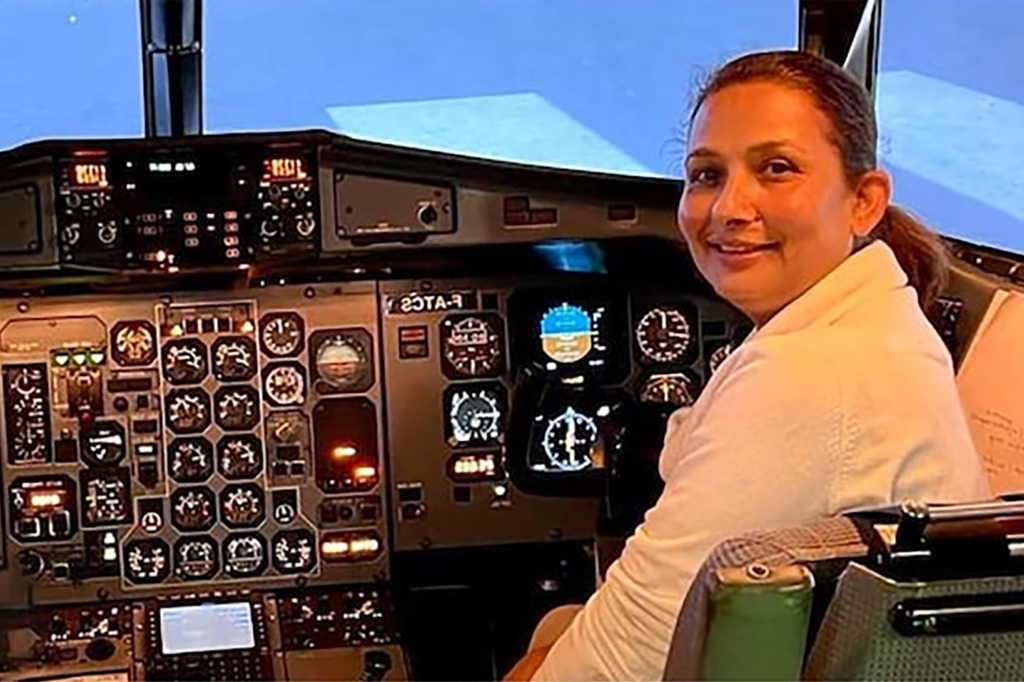
Earlier this month, the panel said an analysis of the cockpit voice recorder and flight data recorder showed the propellers of both engines went into a feathered position.
“When both propellers were feathered, the investigation team observed that both engines of 9N-ANC were running flight idle condition during the event flight to prevent over torque,” stated the report, which was posted on the website of the Ministry of Tourism, Culture and Civil Aviation of Nepal.
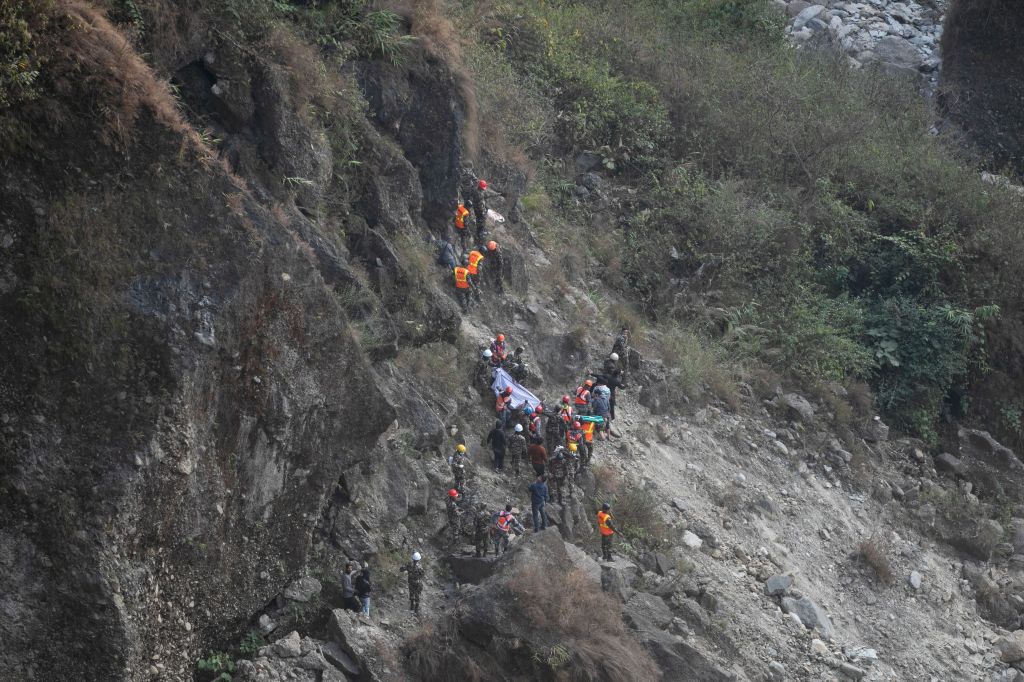
When the air traffic controller in Pokhara cleared the flight for landing, Captain Khatiwada twice mentioned that there was no power in the engines, according to the preliminary report.
The doomed flight was operated by Khatiwada, who was in the process of obtaining airport familiarization for operating in Pokhara, and KC, who was the instructor pilot on the training flight, which was their third that morning after a previous round trip.
Khatiwada, 44, was the pilot flying the plane, and KC, 58, was the pilot monitoring, according to the report.
Khatiwada joined Nepal’s Yeti Airlines in 2010, following in the footsteps of her husband, Dipak Pokhrel, who was killed four years prior when the small passenger plane he was piloting for the air carrier crashed minutes before landing.
KC had completed his pilot training in the US and had been flying planes since 1989. He had more than 21,900 flight hours.
Read the full article Here


